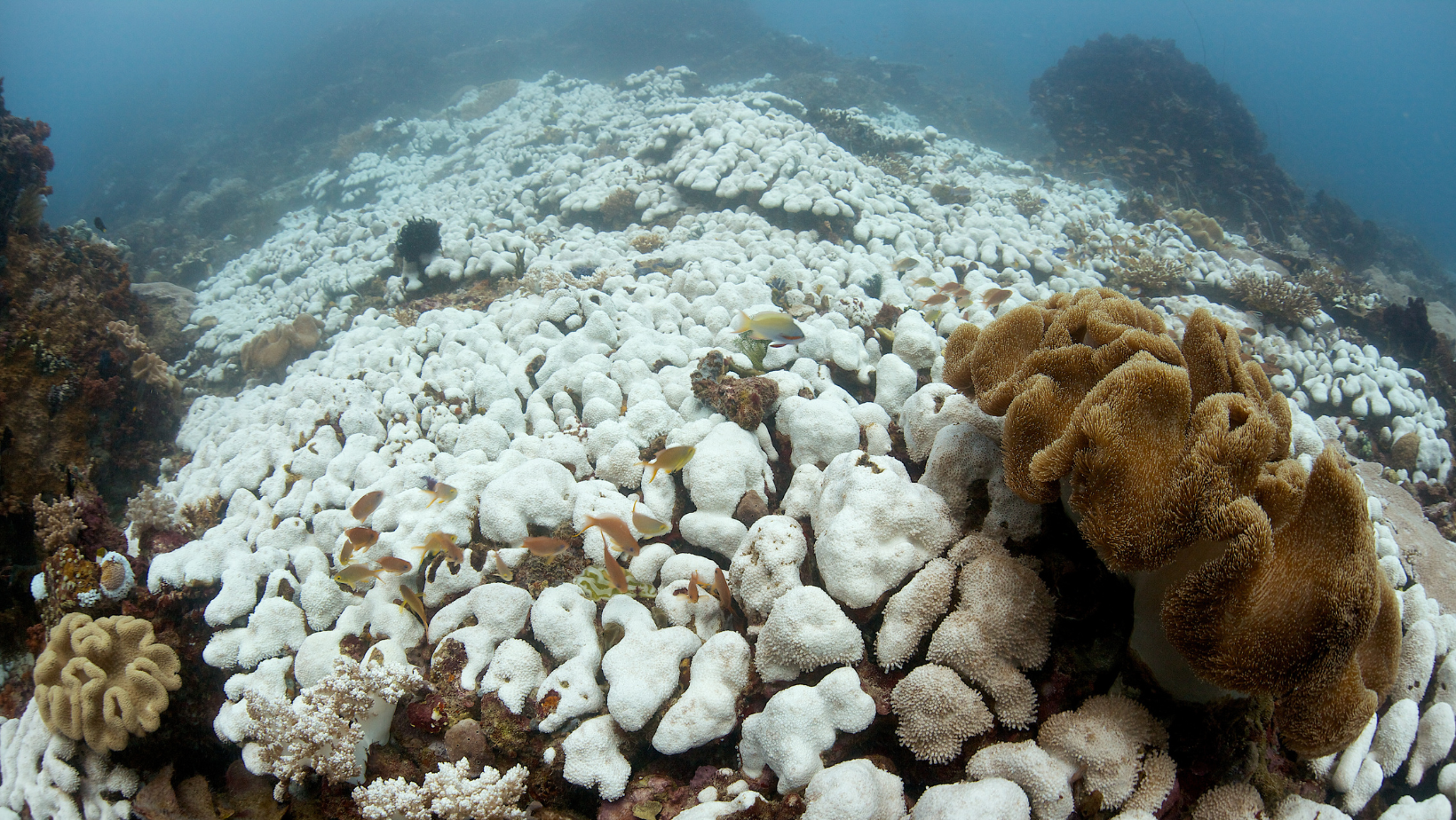All you need to know about reef safe sunscreen

Why is it important to use reef-safe sunscreen?
There is growing concern in the sustainability community about the environmental impact traditional sunscreens have on our planet, particularly our oceans. According to the latest research, several chemicals typically found in sun cream can have a detrimental impact on coral reefs and marine life.
Sun protection is not a luxury, it is essential for keeping our skin healthy and happy – we can’t just avoid it altogether! So how do we make sure we are protecting our skin without harming our oceans and marine life?
One of our goals at The Good Shopping Guide is to make ethical consumption easy for our readers by explaining the ethical issues with every day products and outlining what they can do to help reduce their impact. This article will explore the environmental concern associated with traditional sun creams and provide some recommendations for reef safe products you can choose instead.
The environmental impact of traditional sunscreen
According to Reef Relief, it is estimated that 4000 to 6000 tonnes of sun cream washes off our skin and into our oceans every year worldwide! When we swim in the sea or take a shower, this sun cream runs of our skin into the water. Since 2008, scientists have been publishing research indicating that the chemical run-off from many sun creams can harm coral reefs, particularly through coral bleaching.
As well as bleaching the coral, chemicals such as oxybenzone and octinoxate, typically found in chemical sun lotions, can also cause DNA damage, abnormal skeleton growth and deformities. As stated by WWF, once these corals die, they rarely come back.
As thousands of marine animals rely on coral reefs for survival, including creatures such as sea turtles, fish, crabs, shrimp, jellyfish, starfish and more, the destruction of coral reefs harms the entire marine ecosystem. Moreover, the latest research suggests that the chemicals found in some sunscreens can also harm other marine life, such as green algae, sea urchins, mussels, dolphins and fish. This includes decreasing fish fertility and causing deformities in young.
In Hawaii, the situation has become so severe that the U.S. state became the first place in the world to pass a bill banning all sun creams containing chemicals known to harm coral reefs. This law came into effect in January 2021, and we hope it is the first of many!

The difference between chemical and mineral sunscreens
You may not be aware that sunscreen comes in two different forms: chemical and mineral. Chemical sunscreens use synthetic compounds, such as many of the chemicals that harm our oceans, to block UV rays by absorbing them. In contrast, mineral sun lotions work by creating a physical barrier on your skin to reflect the UV rays away, using minerals such as zinc oxide.
This means that chemical sunscreen products are the ones to worry about, whilst mineral sunscreens tend to be reef safe. Additionally, mineral sun lotions are usually considered to be better for people with sensitive skin and are just as effective!
Choosing a mineral sun cream is therefore the best option for consumers that want to minimise their impact on our oceans and marine life. Mineral sunscreens are typically labelled as such, but you can check for zinc oxide or titanium dioxide (the main active ingredients in mineral sun lotions) to make sure.
How to find reef safe sunscreen
Nowadays, many ethical brands offer sunscreens labelled as ‘reef safe’, making it easier than ever to choose the more sustainable option. We have outlined some of our top recommendations, based on the brands with the highest GSG scores on our Sun Protection Ethical Comparison Table.
Green People and Tropic Skincare, the joint highest scorers in our Sun Protection research, offer sun lotions which are 100% reef safe. Green People offers mineral sunscreen products that are also vegan, organic and cruelty-free!
Similarly, Tropic Skincare’s sunscreens are Protect Land + Sea Certified, which means they are independently tested to verify they do not contain ingredients that pollute our oceans or rivers. Much like Green People, Tropic Skincare’s products are also cruelty-free and vegan. Plus, Tropic even offers a SPF lip balm!
Another great choice is incognito, which also receives an excellent score in The Good Shopping Guide. incognito offers a mineral sunblock which is not only reef safe, organic, cruelty-free and vegan, but also functions as an insect repellent!
You can also check the list of ingredients on the back of a product if you want to be sure whether it contains any harmful ingredients. You want to avoid products containing the following chemicals: oxybenzone, octocrylene, octinoxate, octisalate, avobenzone, benzophenone-1, benzophenone-8, OD-PABA, 4-methylbenzylindene camphor, 3-benzylidene camphor, homosalate and nanoparticles.
We hope that this article has helped you understand the harmful impact that many sunscreens have on our oceans and why it is so important to choose reef safe sunscreen as a sustainable alternative. By following this advice, you can make a change that helps protect our oceans and marine wildlife. Check out our Sun Protection Ethical Comparison Table to find more ethical sunscreen brands, which may also offer good reef friendly options.
Share
Related articles

Actively Ethical: PLAINANDSIMPLE Awarded Ethical Accreditation
PLAINANDSIMPLE earns Ethical Accreditation for pioneering sustainable fashion, circular design, and a transparent, human rights-focused supply chain.

Trick or Treat: Are there dirty sweets in your Halloween bucket?
Unmask the ethical risks of Halloween sweets and discover which brands are truly treating the Environment, Animals and People.

Greenscents: Making your home cleaner and greener
Eco cleaning just got greener – Pioneering ‘Ethical Innovator’ Greenscents earns independent ethical endorsement.